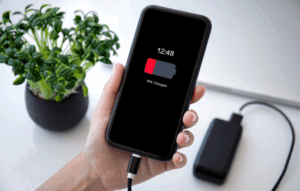Advertisements
The Solar Energy Revolution in Everyday Use
With the advancement of technology, charging devices like cell phones using solar energy has become a practical and sustainable option.
This method not only helps reduce environmental impact, but also offers an efficient solution for those constantly on the go or in locations with limited access to electricity.
Advertisements
How Does Solar Charging Work?
Solar charging uses photovoltaic panels that convert sunlight into electrical energy. These panels, integrated into portable or external devices, store energy in batteries that are then used to charge the cell phone. This process is made possible by three key components:
- Solar panels: They capture sunlight and convert it into electricity.
- Charge controllers: They regulate voltage to protect the device's battery.
- External batteries: They store the generated energy to use it when necessary.
Advertisements
See also
- Firefighter Course: Everything You Need to Know
- Glucose Test: Everything You Need to Know
- Metal Detector: Everything You Need to Know
- Best Apps to Listen to Old Music and Relive Classics
- Best Apps to Create Your Family Tree
Advantages of Using Solar Energy to Charge Your Cell Phone
- Sustainability: Reduces dependence on non-renewable energy sources.
- Portability: Ideal for outdoor activities such as camping or traveling.
- Saving: Reduce electricity consumption, especially in sunny areas.
- Accessibility: Useful in remote regions where electricity is limited or expensive.
Devices Available on the Market
Portable Solar Chargers
These devices are lightweight and compact, ideal for those looking for a mobile option. Some notable brands include:
- Anker 21W PowerPort Solar: Recognized for its efficiency and loading speed.
- BigBlue 28W Solar Charger: It offers multiple USB ports and water resistance.
- Blavor Solar Charger Power Bank: It includes a battery and flashlight, ideal for emergencies.
Cell Phone Cases with Solar Panels
Designed for those who want to simplify solar charging, these cases are a practical option, although they tend to be slower than standalone chargers.
Backpacks with Solar Panels
An innovative solution for adventurers, these backpacks not only offer space to carry items, but also built-in solar panels that allow you to recharge your devices on the go.
Practical Considerations When Using Solar Charging
Location and Orientation
Position the panel at an appropriate angle to maximize sun exposure. Avoid shadows, which can reduce efficiency.
Loading Time
Charging speed depends on sunlight intensity and panel size. On cloudy days, performance will be lower.
Compatibility
Make sure the device is compatible with your phone and includes the necessary adapters.
Tips for Choosing the Best Solar Charger
- Battery capacity: Look for models with built-in batteries of at least 10,000 mAh to ensure multiple charges.
- Panel efficiency: Opt for panels with high efficiency (20% or more).
- Durability: Prioritize water and shock resistant materials.
- Number of USB ports: If you need to charge multiple devices, choose a model with multiple outputs.
User Stories: How Solar Charging Changed Their Lives
Maria, a keen hiker, shares: “Solar charging was a game changer for me. Now I can charge my phone and smartwatch while I explore without worrying about running out of battery.”
Luis, who works in a rural area, says, “With the solar charger, I have power for my devices even on the busiest days. It's a worthwhile investment.”

FAQ Section
Is it efficient to charge a cell phone with solar energy?
Yes, especially in areas with high sun exposure. Although charging speeds may vary, it's a practical and environmentally friendly solution.
Can I use a solar charger on cloudy days?
It works, but efficiency is significantly reduced. Some models include built-in batteries to store previously captured energy.
Are solar chargers waterproof?
Many models are water resistant, but it's important to check the manufacturer's specifications before exposing them to extreme conditions.
How expensive are solar chargers?
Prices vary depending on capacity and features, from budget options for less than €30 to premium models that cost over €100.
Where can I purchase solar chargers?
You can find them in specialty stores, e-commerce platforms like Amazon, and sporting goods stores.
References
- “Solar Charging Made Easy,” GreenTech Magazine.
- “Guide to Choosing a Solar Charger,” EcoLife Journal.
- Download applications to optimize the use of solar energy: Google Play | App Store.






